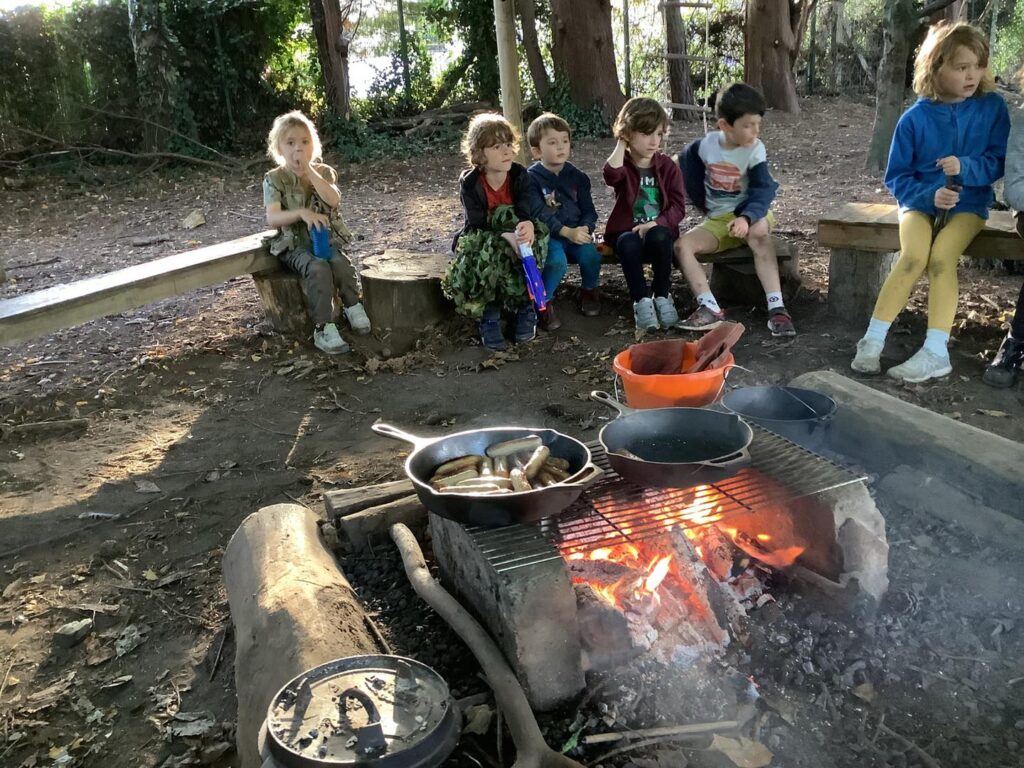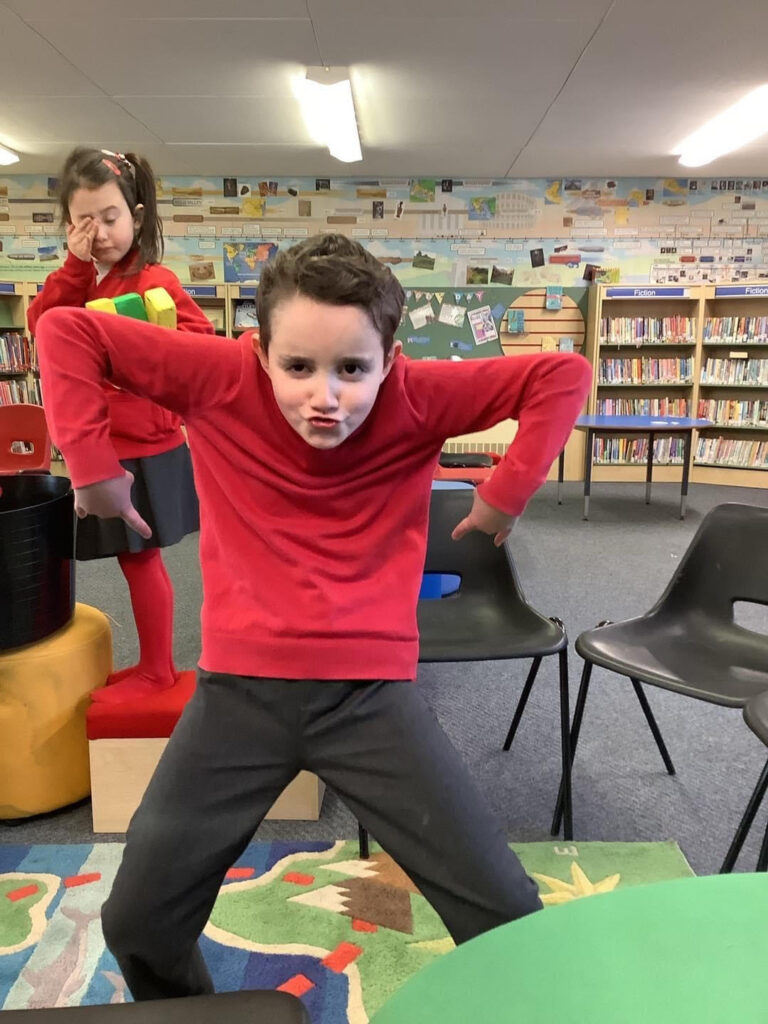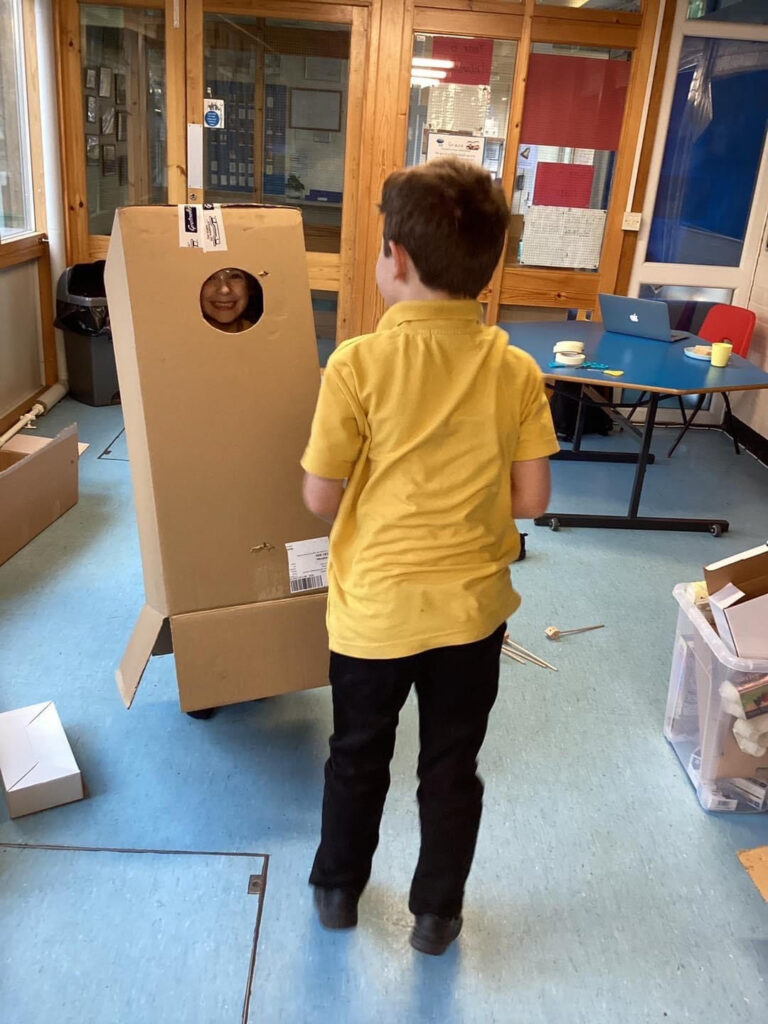16 Play Types: What is Communication Play?

Communication Play is one of the 16 play types considered essential for child development. It was first defined by well-known playworker Bob Hughes.
Here we take a closer look at Communication Play in order to understand what it is, why it is important and how it is supported at Smartkidz.

What is Communication Play?
Communication Play is defined as:
Play using words, nuances or gestures, for example, mime, jokes, play-acting, singing, debate, poetry.
Communication play uses the whole body – from facial expressions, hand gestures, body demonstration and vocally.
Communication play can happen alongside any of the other types of play – Creative play, deep play, dramatic play, exploratory play, fantasy play, locomotor play, imaginative play, mastery play, object play, recapitulative play, role play, rough and tumble play, social play, symbolic play and socio-dramatic play. You can find out more about the 16 play types in our blog post “What are the Playwork Principles and Play Types?”
Where does the definition come from?
Communication play is one of the 16 play types as outlined by Bob Hughes in his 1996 book A Playworker’s Taxonomy of Play Types, and we have already looked at another form of play – deep play – in our blog.
Bob Hughes, a playworker since the 1970s, has written several books for people who work in a play-based environment. His sixteen play types form the basis of our understanding of the complexity and importance of play.

Why is Communication Play Important?
Communication Play is an essential part of how children learn to communicate with others. It allows them to explore not just verbal communication – exploring how words can be manipulated and used to convey meaning – but also other forms of communication such as body language and gestures.
Communication Play also has a huge part to play in developing their ability to listen and understand others as they negotiate a game or play out a made-up/ fantasy scenario.
Examples of Communication Play
There are many examples of Communication Play, and it can be a key part of any play activity. Although it may seem that communication play can only happen between two or more people, it is also an integral part of solo play too. Children playing on their own may still be building communication into their actions or actively trying to communicate with observers.
At Smartkidz, children can experience Communication Play in many ways :
Telling jokes
Jokes are great for developing a sense of humour, but they also require a complex range of communication skills. In play, jokes can be told purposefully and sometimes they happen spontaneously. Whether they are received well or not, this interaction is excellent practice for the future.
Play-acting
Role-play games where a child takes on the character of someone else provide children with many exceptional opportunities to explore language and develop their communication skills. Role-play doesn’t just involve oral communication but also requires the use of gestures and alterations to body movement.
Singing
Whether singing well-known songs or creating their own, when a child sings they are playing with and exploring language. Singing supports fluent oral communication and provides the opportunity to practice controlling a range of vocal sounds beyond that of normal conversation.
Making plans
While play often happens spontaneously, at Smartkidz, we regularly observe children planning their next move or game. This often helps children to work together but is also essential for overcoming challenging obstacles or moving a well-practiced game in a new direction.

How is Communication Play Supported at Smartkidz?
Communication play is happening all the time within our settings; this may be between child and child or child and adult. Within our vision, communication play is, more often than not, initiated by the child when adults are involved. When playworkers try to initiate this play, it can adulterate the play that is already happening (see our blog about the play cycle).
With a large push on loose parts play, this is fantastic for communication play. We see lots of role-play games, problem-solving games, building and construction etc. Children will be communicating with each other about how things should be built, creating tactics is made up battles with forts and sticks as swords or even just having a chat in a recently erected den or shelter that they have made.
Managing negative communication
Communication, however, may not always be positive and at times may be argumentative, name-calling or mocking. This is when our PARS training comes into use, reading facial expressions, behaviours and knowledge of the individuals, to make judgements on what we should do, should we intervene or stand back and see how this is resolved.
Allowing children to resolve negative communication is important and staff will use techniques and methods to support (or not support) depending on the above observations.
As an adult, we can be rude to each other as a joke, call each other names and mock each other. Sometimes this goes well, and sometimes it may upset someone; however, this is accepted in adult life; however, when children call their friend something rude, we often say that that is not kind and they shouldn’t do this, even if the other child is laughing or finding it funny. As playworkers, it’s about managing those moments.
Conclusion
Communication Play is vital for children’s development and socialisation. While some play activities revolve solely around communication, this play type is commonly found combined with other play types.
However, no matter which activities are used or which other play types it’s combined with, communication play helps children to develop the social and interpersonal skills that they will rely on throughout their life.
